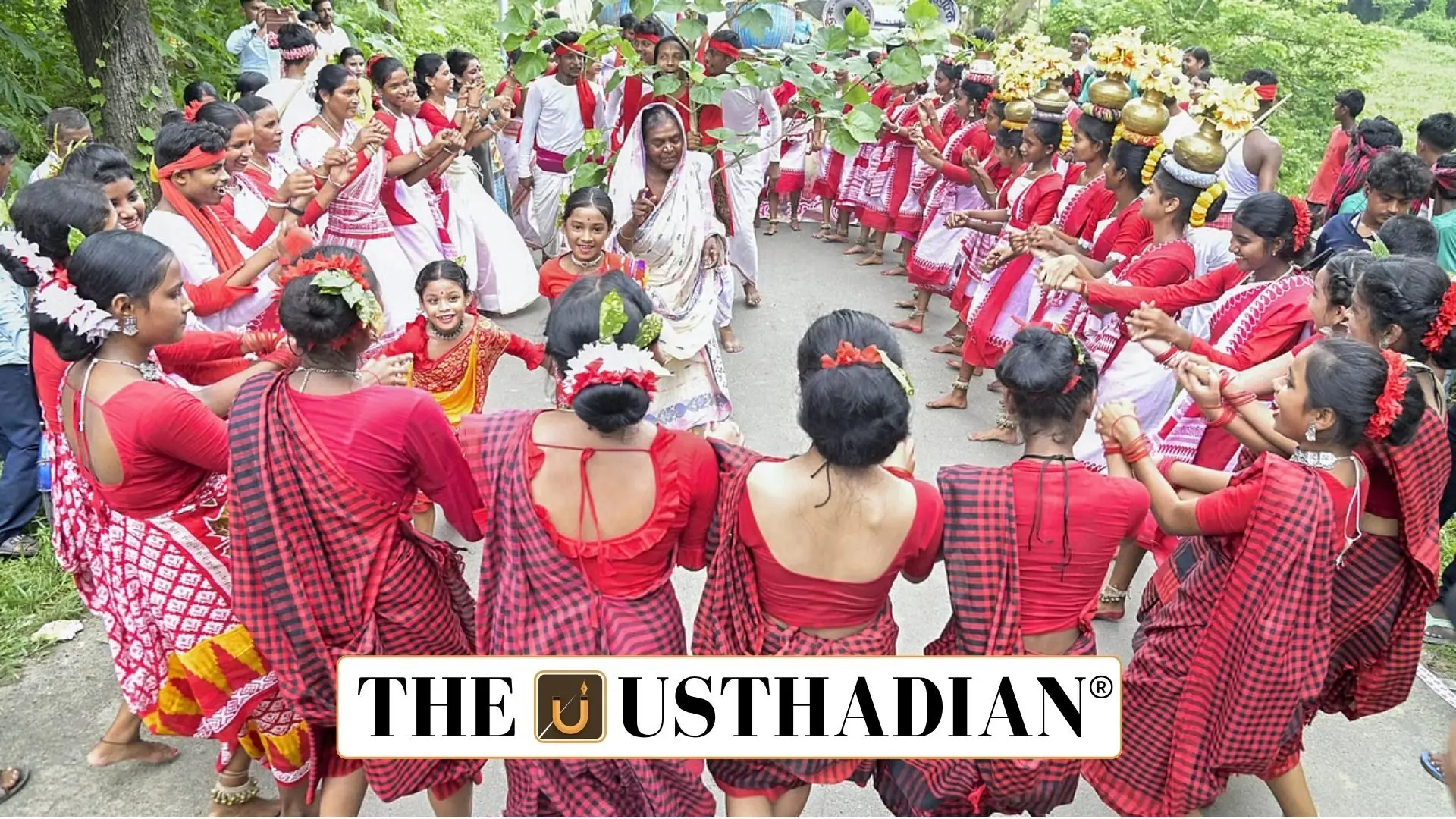Deep Cultural Connection with the Sal Tree
Sarhul Festival: Celebrating Adivasi Unity and Nature Worship in Jharkhand: At the heart of Sarhul lies the Sal tree (Shorea robusta), considered sacred by Adivasi communities like the Munda, Santal, and Oraon. Revered as the abode of Sarna Maa, the village deity, the Sal tree is more than a plant—it is a symbol of balance between Sun and Earth, life and land, and is believed to protect the community and ensure a good harvest. Its blooming in spring signals the beginning of the agricultural cycle and the renewal of life.
Structure and Rituals of the Festival
Sarhul spans three days, beginning with the cleaning of homes and Sarna Sthals (sacred groves), decorated with red and white flags. The village priest or ‘pahan’ plays a central role, collecting Sal flowers and conducting rituals, including a rooster sacrifice to please the spirits. On the second day, traditional dances like Jadur and Gena fill the air as people gather to give thanks for nature’s bounty. These rituals echo age-old spiritual practices passed down through generations.
Community Involvement and Social Unity
Sarhul is not just a festival—it’s a community celebration. Young men participate in ceremonial fishing, and women prepare traditional meals and rice beer, known as handia. On the final day, a grand communal feast is shared under open skies, reinforcing social bonds and collective identity. The pahan blesses the people, ensuring peace and prosperity for the year ahead, reminding everyone of their shared responsibilities and harmony with nature.
Evolution and Contemporary Relevance
Originally rooted in hunting culture, Sarhul gradually adapted to the agrarian lifestyle of Adivasi communities. During the British era and subsequent displacement of tribes, Sarhul spread to Assam, Nepal, and Bhutan, becoming a broader symbol of Adivasi resistance and identity. Today, it is recognized as a cultural assertion amidst growing awareness of indigenous rights, celebrated not just in villages but in urban processions and cultural rallies across Jharkhand and eastern India.
STATIC GK SNAPSHOT
Sarhul Festival: Celebrating Adivasi Unity and Nature Worship in Jharkhand:
| Feature | Details |
| Festival Name | Sarhul |
| Celebrated In | Jharkhand, Assam, Nepal, Bhutan |
| Key Tribes | Munda, Santal, Oraon |
| Sacred Tree | Sal Tree (Shorea robusta) |
| Ritual Leader | Pahan (Village Priest) |
| Sacred Site | Sarna Sthal (sacred grove) |
| Traditional Drink | Handia (Rice Beer) |
| Duration | Three Days |
| Main Rituals | Sal Flower Offering, Rooster Sacrifice, Dances |
| Historical Evolution | From hunting to agrarian festival |
| Importance | Adivasi cultural identity, nature worship |








